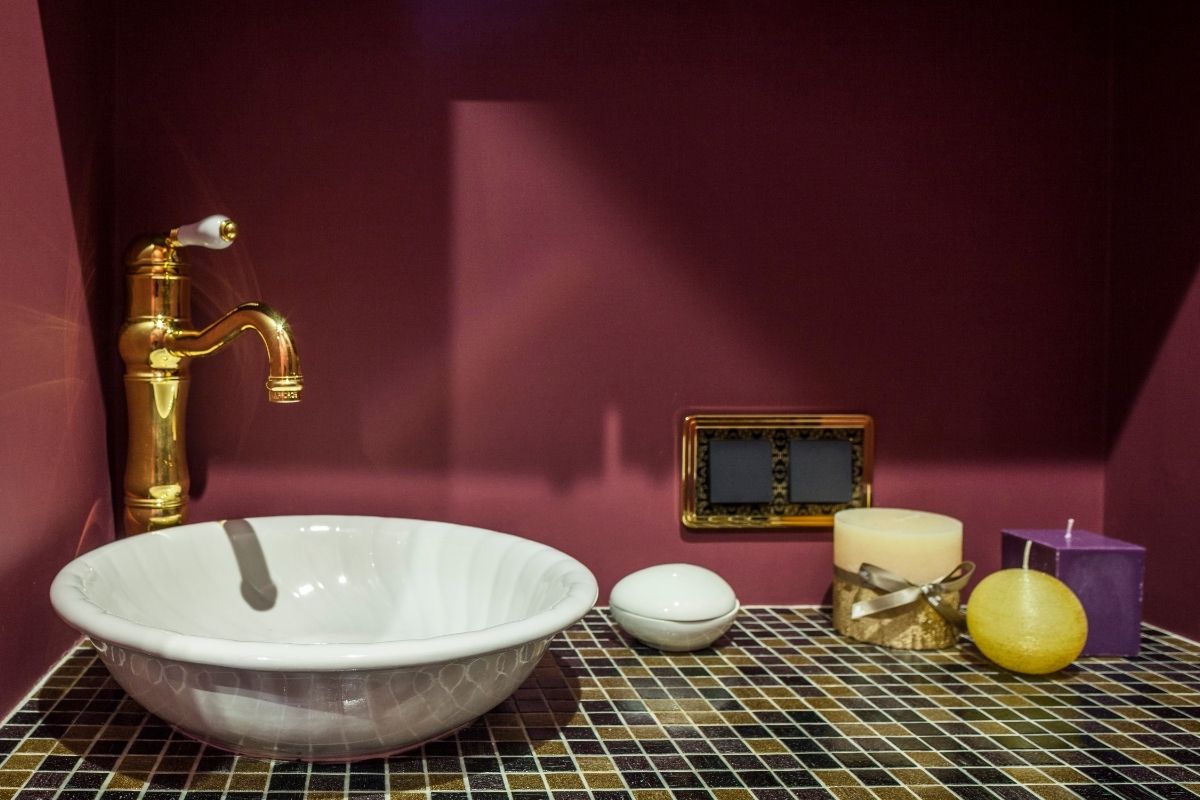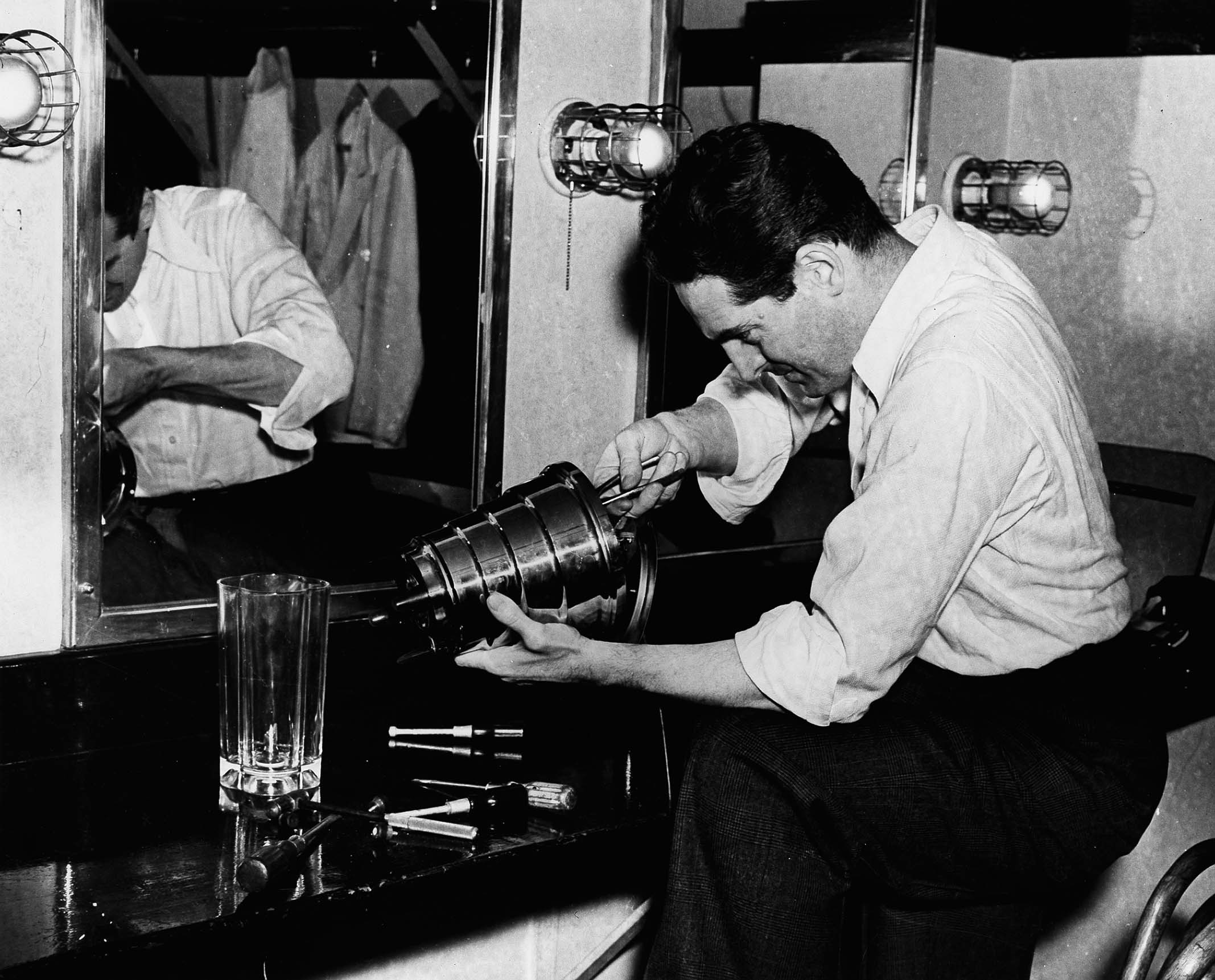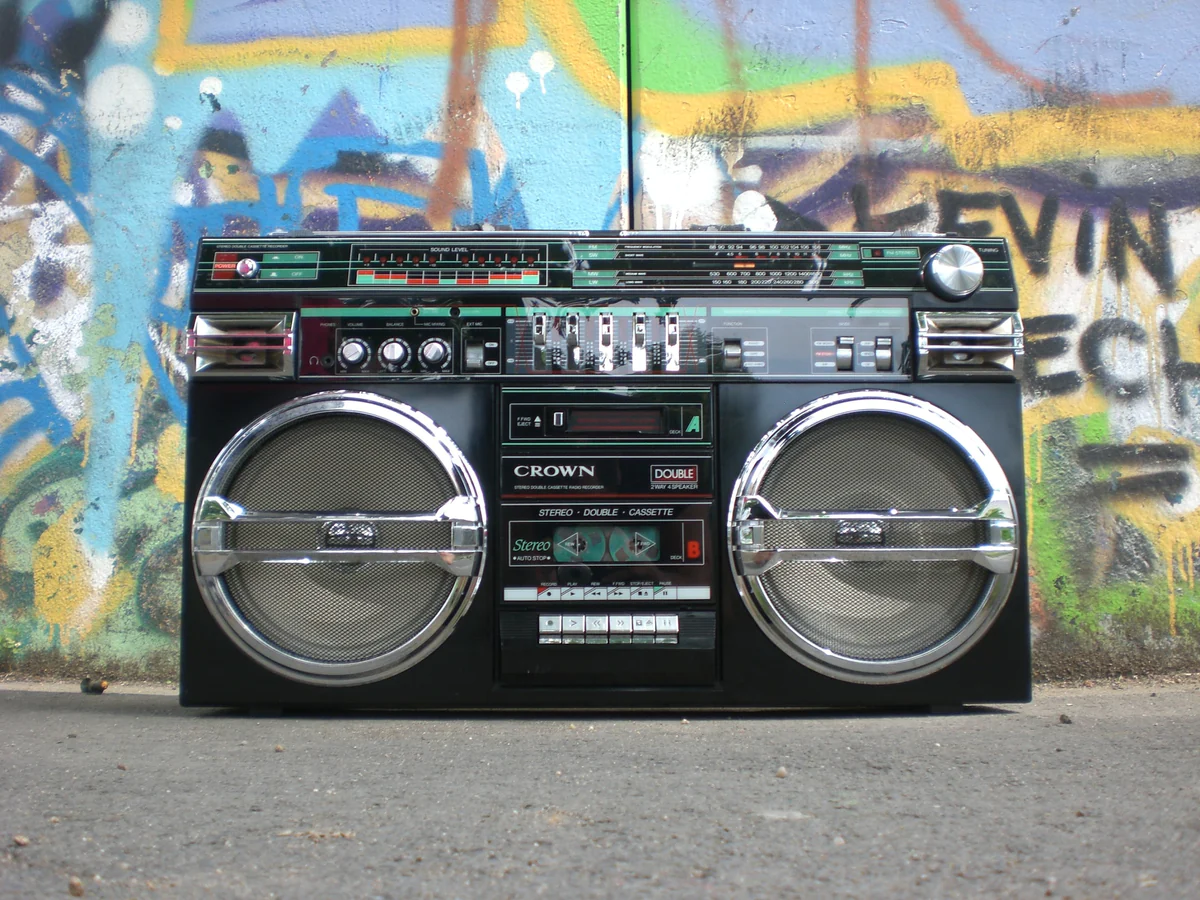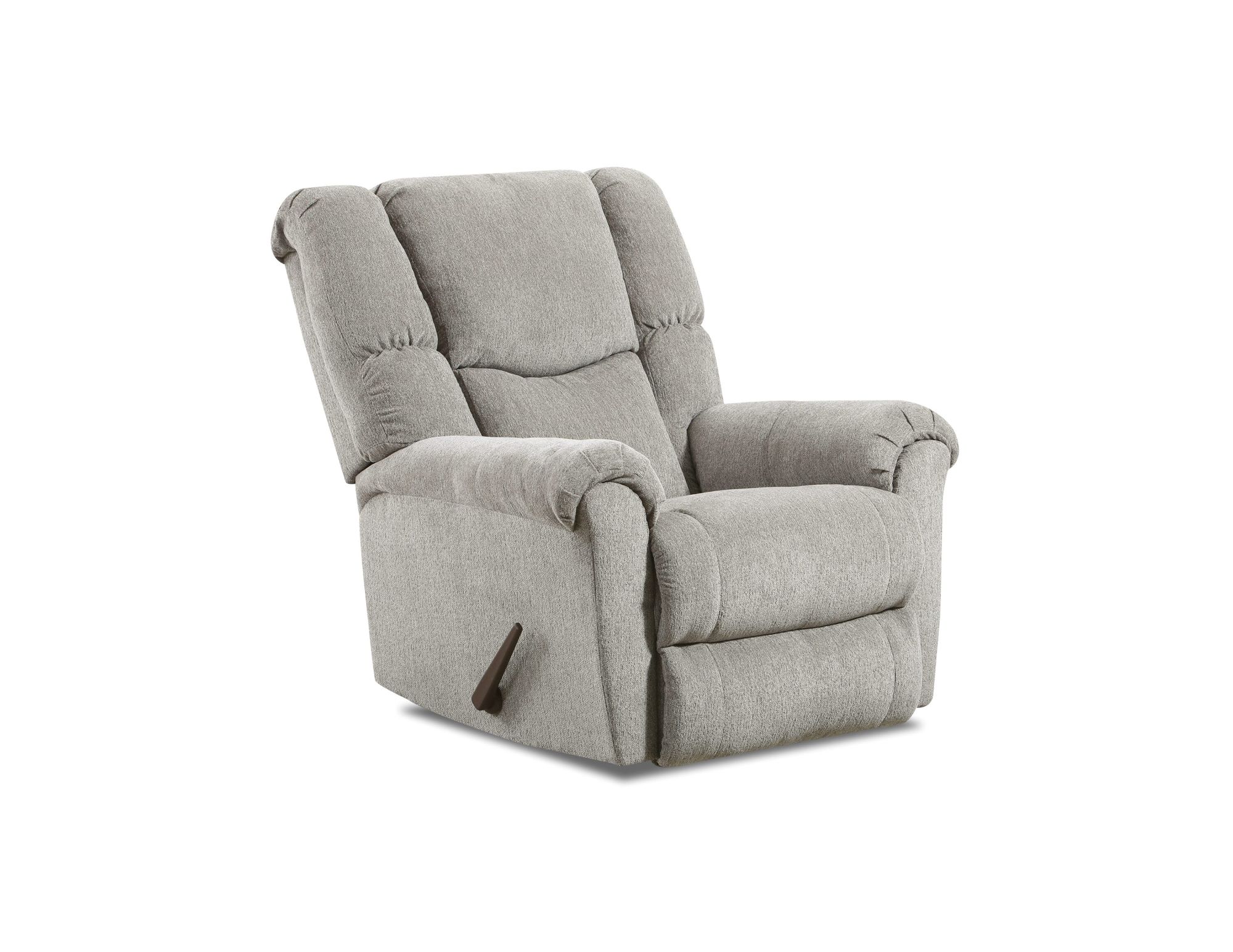Home>Furniture>Bedroom Furniture>When Was The Mattress Invented
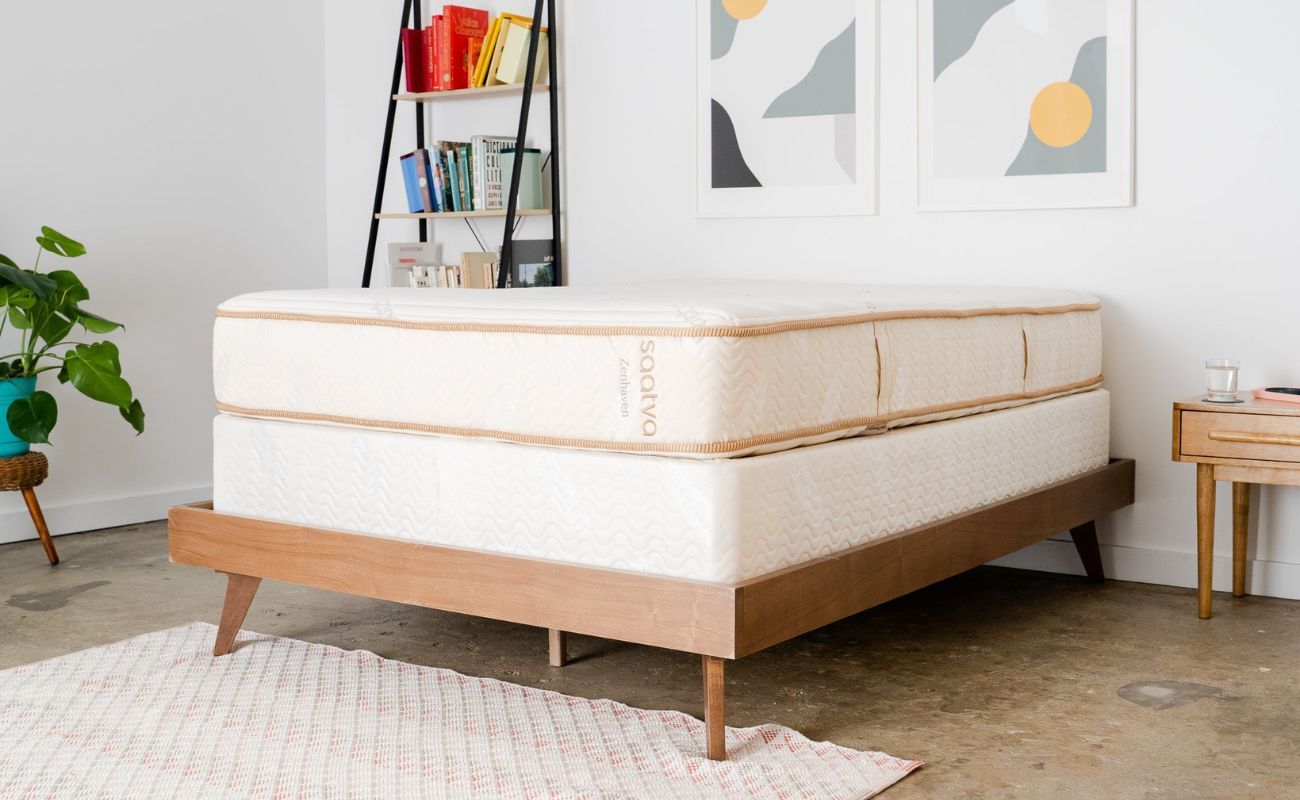

Bedroom Furniture
When Was The Mattress Invented
Modified: January 9, 2024
Discover the history of bedroom furniture with a fascinating exploration of when the mattress was invented. Uncover the origins and evolution of this essential piece of comfort.
(Many of the links in this article redirect to a specific reviewed product. Your purchase of these products through affiliate links helps to generate commission for Storables.com, at no extra cost. Learn more)
Introduction
From ancient times to the present day, the concept of a comfortable and supportive sleeping surface has been a fundamental part of human civilization. While the modern mattress as we know it today may seem like a recent invention, its roots can be traced back thousands of years. In this article, we will explore the fascinating history of mattresses, from early bedding prototypes to the advancements in modern sleep science.
Throughout history, humans have sought ways to improve the quality of their sleep. Early civilizations relied on primitive forms of bedding, such as straw or leaves strewn on the ground. However, it wasn’t until the Ancient Egyptians that the first mattress prototypes truly began to take shape.
## Early Bedding and Mattress Prototypes
In ancient Egypt, the elite classes used raised beds made of wood or metal and supported by woven ropes or cords. These beds were filled with various materials, such as palm fibers, straw, or even feathers, to provide a more comfortable and cushioned sleeping surface. These prototypes laid the foundation for future advancements in bedding technology.
## Ancient Civilizations and Sleeping Surfaces
As civilization advanced, so did the development of sleeping surfaces. In Ancient Rome, the wealthy slept on mattresses filled with feathers, wool, or hay. The Romans were known for their innovation and luxury, with some even incorporating springs into their mattress designs to provide additional support.
Throughout Asia, traditional bedding materials such as futons and tatami mats became popular. In Japan, the futon, a thin mattress placed directly on the floor, has been widely used for centuries. These traditional bedding options focused on simplicity and were often made from natural materials like cotton or silk.
## The Evolution of Mattresses in Europe
It wasn’t until the Middle Ages that mattresses started to become more accessible to the general population in Europe. The introduction of the mattress to the masses is credited to the Crusaders who brought back the concept of comfortable bedding from the Middle East.
During the Renaissance period, mattress production flourished. Mattresses were typically made of coarser materials such as pea shucks, straw, or horsehair. However, the beds themselves were often ornate and lavishly decorated, showcasing the wealth and status of the owner.
To provide additional comfort and support, Europeans began stuffing mattresses with softer materials such as feathers, wool, or even down. This development marked a significant step in the evolution of mattresses, making them more comfortable and conducive to a good night’s sleep.
Key Takeaways:
- The evolution of mattresses spans centuries, from ancient civilizations to modern-day innovations, driven by a quest for comfort, support, and optimal sleep conditions. The history of mattresses reflects our enduring pursuit of a restful night’s sleep.
- Advancements in sleep science and technology have revolutionized mattress design, focusing on pressure relief, spinal alignment, cooling technologies, and sustainability. The future of mattresses holds exciting possibilities for personalized sleep solutions.
Read more: Who Invented The Mattress
Early Bedding and Mattress Prototypes
In ancient times, people recognized the importance of a comfortable sleeping surface and sought various methods to improve their quality of sleep. The early prototypes of mattresses can be traced back to ancient civilizations, with the Ancient Egyptians being credited as the pioneers of mattress innovation.
During the time of the Ancient Egyptians, which dates back to around 3400 BCE, the elite classes used raised beds made of wood or metal. These beds were elevated from the ground and supported by woven ropes or cords. To provide a more comfortable sleeping surface, these early Egyptians filled their beds with materials such as palm fibers, straw, or even feathers.
The use of these materials allowed for a cushioned and supportive sleeping experience, marking the first significant leap in mattress technology. However, it is important to note that the availability of such luxuries was limited to the wealthy classes, while the common people still slept on primitive bedding materials.
The Ancient Egyptians were not the only civilization to experiment with early mattress prototypes. In other parts of the world, similar developments were taking place. During the same time period, the Chinese and the Persians began using mats made from various natural materials as bedding. These mats were filled with straw, reeds, or even grass to provide a softer surface for sleeping.
In Ancient Rome, the focus shifted towards comfort and luxury. The wealthy Romans slept on mattresses filled with feathers, wool, or hay. Some even went as far as incorporating springs into their mattress designs to enhance support and improve overall sleep quality. The mattresses of the Roman elites were often lavish and adorned with intricate designs, reflecting the status and wealth of the owners.
In contrast, the common people during this period relied on more rudimentary bedding options. They would sleep on simple mats made of straw or animal skins, directly on the floor. These mats offered minimal comfort, but they were accessible to the masses due to their affordability.
Throughout Asia, traditional bedding methods such as the use of futons and tatami mats became prevalent. In Japan, the futon, a thin mattress placed directly on the floor, has been widely used for centuries. These futons were filled with natural materials like cotton or silk, providing a comfortable sleeping surface while maintaining simplicity in design.
These early bedding and mattress prototypes served as the building blocks for future advancements in mattress technology. While they may have been basic by today’s standards, they laid the foundation for the development of more sophisticated and comfortable sleep surfaces that would follow in the centuries to come.
Ancient Civilizations and Sleeping Surfaces
Throughout history, different civilizations have devised their own unique sleeping surfaces to ensure a restful night’s sleep. From the opulence of Ancient Rome to the simplicity of Asian traditions, these ancient civilizations made significant contributions to the evolution of mattresses.
In Ancient Rome, the concept of comfort and luxury extended to sleeping surfaces. The Roman elites slept on mattresses filled with feathers, wool, hay, or even straw. These materials provided a soft and cushioned sleeping surface, enhancing the overall sleep experience. The mattresses were often supported by wooden frames and adorned with ornamental decorations, portraying the social status and wealth of the owners.
Similarly, Ancient Greek sleeping habits were influenced by their Mediterranean neighbors. Greek mattresses were typically made of reeds or straw stuffed into a cloth bag. These mattresses were easy to transport and offered a basic level of comfort. As the Greeks traveled and interacted with other cultures, they adopted and adapted various mattress designs, further diversifying the sleeping surfaces across different regions.
In Asia, traditional bedding methods also emerged, showcasing unique cultural practices. For instance, in Japan, tatami mats and futons became the preferred sleeping surface. Tatami mats, made from woven straw, were laid on the floor, providing a firm yet supportive base. Traditional futons, filled with cotton or silk, were placed on top of the tatami mats. The futons could be easily rolled up and stored during the day, maximizing the use of space in Japanese homes.
Meanwhile, in ancient China, the Chinese people used a combination of straw mats, blankets, and quilts as their sleeping surface. These materials offered a modest level of comfort while still reflecting the practicality and simplicity valued in Chinese culture.
Around the same time, the Egyptians also continued to refine their sleeping surfaces. They began using animal skins, such as those from sheep or goats, as bedding. These skins provided natural insulation and added an extra layer of comfort for sleeping.
Throughout these ancient civilizations, the emphasis on sleeping surfaces demonstrated a growing awareness of the importance of restful sleep. While the materials and designs varied, the common goal was to create a supportive and comfortable environment to promote quality sleep.
These ancient civilizations laid the groundwork for subsequent developments in mattress technology. The knowledge gained from their trials and innovations served as a foundation for advancements that would take place in Europe during the Middle Ages and beyond, as well as in other parts of the world.
The Evolution of Mattresses in Europe
The Middle Ages marked a significant turning point in the evolution of mattresses in Europe. During this time, advances in technology and cultural exchanges led to the refinement of bedding materials and the introduction of more comfortable sleeping surfaces.
The Crusaders, who were exposed to the comfort of luxurious bedding during their campaigns in the Middle East, played a crucial role in introducing these new concepts to Europe. They brought back knowledge of sleeping on raised beds with softer and more supportive surfaces.
As a result, the demand for improved sleeping surfaces grew among the general population. The use of straw or coarse fillings in mattresses started to be replaced with softer materials such as feathers, wool, or horsehair. The introduction of these new fillings made mattresses more comfortable and provided better support for those who could afford them.
During the Renaissance period, mattress production saw further advancements. Mattresses were often made with coarser materials, such as pea shucks or straw, and wrapped in fabric to prevent these fillings from poking through. Bed frames became more elaborate and were often carved with intricate designs, reflecting the opulence and wealth of the owner.
With the advancements in mattress technology, the use of bedsteads became more widespread. These wooden frames, sometimes embellished with ornate carvings, provided stability and support for the mattress. The mattress was placed on top of the bedstead, creating a more elevated and comfortable sleeping surface.
The 19th century brought about significant changes in mattress manufacturing. With the Industrial Revolution, mass production became possible, allowing mattresses to be produced on a larger scale and at a more affordable price. This led to increased accessibility to comfortable sleeping surfaces for a wider range of social classes.
During this period, coil springs were also introduced into mattress design, revolutionizing the industry. The addition of springs provided better support and improved the overall structure of the mattress. These advancements laid the foundation for future innovations in mattress technology.
In the early 20th century, the introduction of innerspring mattresses became a game-changer. The use of metal coils within the mattress greatly improved support and comfort, and this technology is still widely used in modern mattresses today. Alongside innerspring mattresses, other types of mattresses emerged, such as waterbeds and airbeds, offering different levels of customizability and comfort.
With the advancements in sleep science and technology, the 21st century has witnessed the development of memory foam mattresses, latex mattresses, and hybrid mattresses. These mattresses are designed to contour to the body, relieve pressure points, and provide optimal support and comfort for a restful night’s sleep.
Indeed, the evolution of mattresses in Europe reflects a continuous quest for better sleep comfort and support. From simple straw-filled bags to sophisticated and scientifically designed sleep surfaces, the journey of mattresses demonstrates the human desire for a good night’s sleep and the innovative spirit that drives the industry forward.
The first known mattress dates back to around 77,000 years ago and was made of leaves and grass. The concept of a mattress has evolved over time to provide better comfort and support for sleep.
The Industrial Revolution and Mattress Innovation
The Industrial Revolution, which occurred from the 18th to the 19th century, brought about significant changes in various industries, including mattress manufacturing. This period of technological advancements and mass production had a profound impact on the evolution of mattresses, leading to increased accessibility, improved materials, and innovative design.
One of the key developments during the Industrial Revolution was the mechanization of mattress production. Traditional handcrafted methods were slowly replaced by machines, allowing for faster and more efficient manufacturing processes. This shift enabled mattresses to be produced on a larger scale, making them more affordable and accessible to a wider range of people.
The use of machinery also led to improvements in the materials used for mattress construction. With the introduction of cotton gin and automated spinning machines, cotton became more readily available and affordable. Cotton-based mattresses gained popularity due to their softness, breathability, and durability.
Additionally, the availability of metal springs during the Industrial Revolution revolutionized mattress design. The invention of the coil spring mechanism allowed for increased support, comfort, and overall structure in mattresses. The use of springs in mattress construction became a significant innovation, as it provided a flexible and responsive sleeping surface.
Alongside advancements in mattress manufacturing techniques, the Industrial Revolution also led to the development of bed frames and bedsteads that were more sturdy and durable. Iron and steel were utilized to create strong bed frames, ensuring better support for the mattress and increasing its longevity.
The increased demand and accessibility to mattresses during this period also spurred competition and innovation among manufacturers. Companies began to experiment with different materials and designs to cater to various sleep preferences and provide optimal comfort and support.
With the advancements in transportation and trade, the availability of luxurious materials like silk and wool also increased. These materials were incorporated into higher-end mattresses, providing enhanced comfort and luxury for those who could afford them.
Furthermore, the Industrial Revolution brought improvements in hygiene and sanitation practices, which also influenced mattress innovation. Manufacturers began to prioritize cleanliness and introduced techniques to repel dust mites and allergens from the mattress fabric.
Overall, the Industrial Revolution sparked a wave of innovation and transformation in the mattress industry. From the introduction of mechanized production and the use of metal springs to improved materials and hygiene practices, this era laid the foundation for the modernization and standardization of mattresses that continues to this day.
The advancements during the Industrial Revolution set the stage for future innovations in mattress technology, including the development of memory foam, latex, and hybrid mattresses, allowing for even greater customization and comfort. As technology continues to advance, the pursuit of better sleep surfaces and optimal rest remains a driving force in the ongoing evolution of mattresses.
Read more: When Was The Bathtub Invented
20th Century Advancements in Mattress Technology
The 20th century brought about significant advancements in mattress technology, revolutionizing the way we sleep and enhancing our overall comfort and well-being. Throughout the century, various innovations and developments emerged, offering improved support, durability, and customization options.
One of the key breakthroughs in mattress technology during the early 20th century was the introduction of innerspring mattresses. This innovation, which utilized metal coils within the mattress, provided better support and increased durability. Innerspring mattresses became widely popular due to their ability to conform to the body’s contours and distribute weight evenly, resulting in a more comfortable sleep experience.
As the century progressed, advancements in materials led to the introduction of new types of mattresses. In the 1940s, latex mattresses became available. These mattresses, made from natural rubber or synthetic latex, offered a resilient and supportive surface that could contour to the body while providing excellent motion isolation.
In the 1960s, the development of memory foam revolutionized the mattress industry once again. Originally invented by NASA to provide cushioning and support for astronauts, memory foam mattresses quickly gained popularity for their ability to conform to the body’s shape and relieve pressure points. The heat-sensitive material reacts to body heat, allowing it to mold to the sleeper’s contours, providing a personalized and comfortable sleep experience.
Throughout the latter half of the 20th century, advancements in mattress technology continued to evolve. Waterbeds, filled with water or a mixture of water and gel, gained popularity in the 1970s. These mattresses offered a unique sensation of weightlessness and gentle support, catering to individual preferences for a floating sleep experience.
In the 1990s, hybrid mattresses emerged, combining the benefits of innerspring and foam technology. These mattresses typically feature a combination of coils and layers of memory foam, latex, or other materials. The hybrid design aims to provide the perfect balance of support, comfort, and durability, catering to a wide range of sleep preferences.
Another notable advancement in the 20th century was the development of adjustable bed bases. Motorized adjustable bases allow sleepers to customize their sleeping positions, offering enhanced comfort and providing ergonomic support for specific needs such as alleviating back pain or promoting better circulation. These adjustable bases often work in tandem with various mattress types to maximize comfort and improve overall sleep quality.
Moreover, advancements in sleep science and research have significantly influenced mattress design and construction. Insights into sleep disorders and the importance of spinal alignment have led to the development of orthopedic mattresses. These mattresses are specifically engineered to provide targeted support to different body regions, ensuring proper sleep posture and promoting optimal spinal alignment.
Throughout the 20th century, advancements in mattress technology have prioritized comfort, support, and customization. From innerspring mattresses to memory foam, latex, hybrid designs, and adjustable bases, these innovations have enhanced the sleep experience for countless individuals, allowing for better rest, improved health, and overall well-being.
As technology continues to advance, it is likely that the 21st century will bring further advancements in mattress technology, focusing on biometric tracking, smart features, and sustainable materials, further enhancing the sleep experience for future generations.
Modern-Day Mattresses and Sleep Science
Advancements in sleep science and technology have greatly influenced the design and construction of modern-day mattresses. With a deeper understanding of sleep patterns and the impact of quality sleep on overall health and well-being, mattress manufacturers have been able to create sleep solutions that prioritize comfort, support, and optimal sleep conditions.
One of the key areas of focus in modern mattress design is pressure relief. Sleep scientists have identified the importance of reducing pressure points on the body during sleep to prevent discomfort and improve circulation. As a result, many mattresses now incorporate materials such as memory foam, latex, or gel-infused foams that conform to the body’s contours and provide targeted pressure relief.
Another vital aspect of modern mattresses is spinal alignment. A well-aligned spine during sleep ensures that the body is properly supported and can prevent back pain and postural issues. Mattress manufacturers utilize different methods to address spinal alignment, including zoning or layering techniques that provide varying levels of support to different regions of the body.
In recent years, cooling technologies have become increasingly popular in mattress design. Some people tend to sleep hot and may experience discomfort due to heat retention. In response to this, mattress brands have developed cooling features such as breathable covers, gel-infused foams, or even phase change materials that can help regulate temperature and promote a cooler sleep environment.
Sleep hygiene and allergen control have also become significant considerations in modern mattress manufacturing. Hypoallergenic materials, anti-microbial treatments, and washable, removable covers are often incorporated to minimize allergens and provide a cleaner sleep surface.
Furthermore, advancements in technology have led to the development of smart mattresses. These mattresses are equipped with sensors that can track sleep patterns, heart rate, and even monitor snoring. Sleep data collected by these mattresses can be analyzed to provide insights into sleep quality and offer personalized recommendations for improved sleep habits.
While comfort and support remain the primary focus, sustainability has become an important consideration in the mattress industry. Many manufacturers now opt for eco-friendly materials, such as organic cotton, natural latex, or recycled materials, to create environmentally conscious and sustainable sleep solutions.
Additionally, advancements in sleep science have led to the recognition of the importance of individual sleep preferences. Mattress brands have responded to this by offering a wide range of options, including varying firmness levels, customizable firmness, and dual-sided mattresses that cater to different sleep needs of couples sharing a bed.
The advent of online mattress shopping has also revolutionized the industry. Many mattress brands now offer direct-to-consumer sales, providing customers with more affordable options and the convenience of home delivery and risk-free trial periods.
Modern-day mattresses are the culmination of centuries of innovation and the application of sleep science. With a deeper understanding of sleep patterns and the individual needs of sleepers, these mattresses are designed to provide personalized comfort, support, and improved sleep quality. As sleep science continues to advance, the future of mattresses holds even more exciting possibilities for creating the perfect sleep environment for individuals of all ages and sleep preferences.
Conclusion
The history of mattresses is a testament to our innate desire for a comfortable and restful night’s sleep. From the early bedding prototypes of ancient civilizations to the advanced sleep solutions of the 21st century, mattresses have evolved significantly to meet our ever-changing needs.
Throughout the centuries, advancements in mattress technology have been driven by a combination of necessity, comfort, and scientific understanding of sleep. From the raised beds of the Ancient Egyptians to the introduction of innerspring mattresses during the Industrial Revolution, each development marked a milestone in improving comfort, support, and overall sleep quality.
With the progress of sleep science and our understanding of the impact of sleep on physical and mental well-being, modern-day mattresses have taken center stage. From memory foam to latex, hybrid designs to smart features, manufacturers have focused on creating sleep surfaces that prioritize comfort, pressure relief, spinal alignment, temperature regulation, and individual sleep preferences.
Additionally, there has been a shift in attention towards sustainable and eco-friendly materials, as well as the incorporation of sleep tracking technologies to provide personalized insights for healthier sleep habits.
Today, we have more choices than ever before when it comes to selecting a mattress that suits our needs and preferences. Online mattress shopping has made it easier than ever to explore various options without having to spend time in physical stores.
The evolution of mattresses reflects our ongoing pursuit of better sleep comfort and support. While the advancement of technology and sleep science has played a significant role in shaping modern mattresses, the core principles of comfort, support, and quality sleep remain unchanged.
As we look to the future, it is clear that there will be continued innovation in mattress design and construction. The incorporation of cutting-edge materials, advanced sleep tracking capabilities, and customization options will likely continue to enhance the sleep experience for individuals across the globe.
By understanding the history and advancements of mattresses, we can appreciate the dedication, research, and innovation that has gone into creating the sleep surfaces we rely on today. Whether it’s ancient civilizations seeking a more comfortable bedding experience or scientists unlocking the secrets of sleep, one thing remains constant – our quest for a good night’s sleep and the continual improvement of mattresses to support that pursuit.
Frequently Asked Questions about When Was The Mattress Invented
Was this page helpful?
At Storables.com, we guarantee accurate and reliable information. Our content, validated by Expert Board Contributors, is crafted following stringent Editorial Policies. We're committed to providing you with well-researched, expert-backed insights for all your informational needs.
